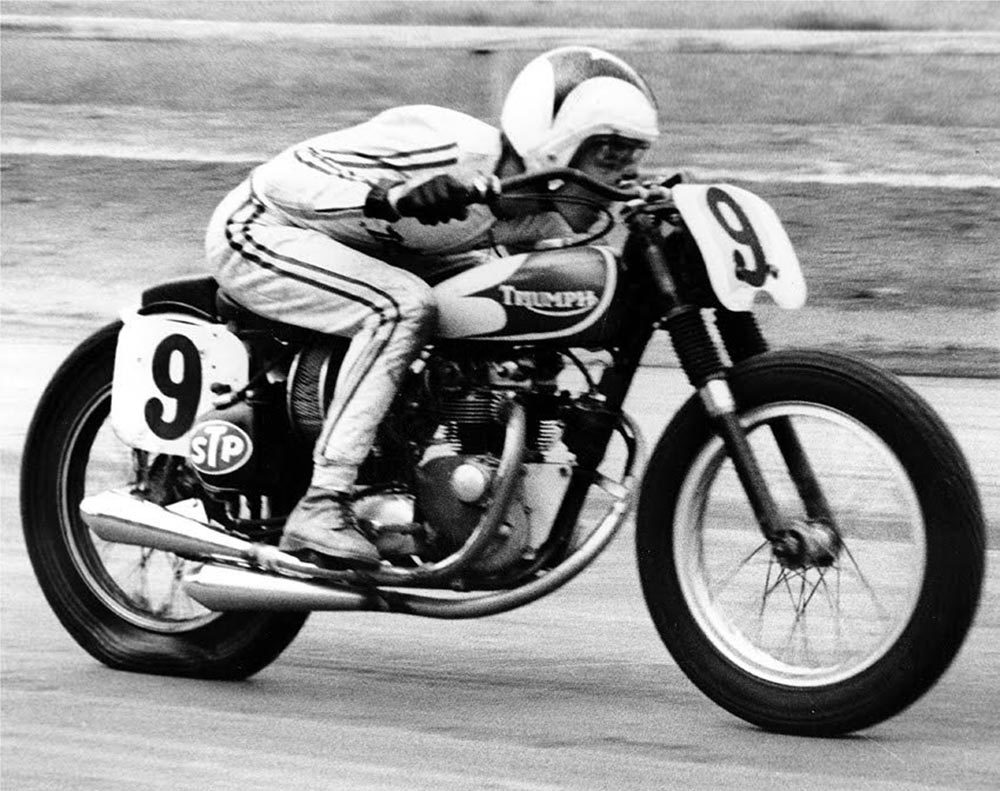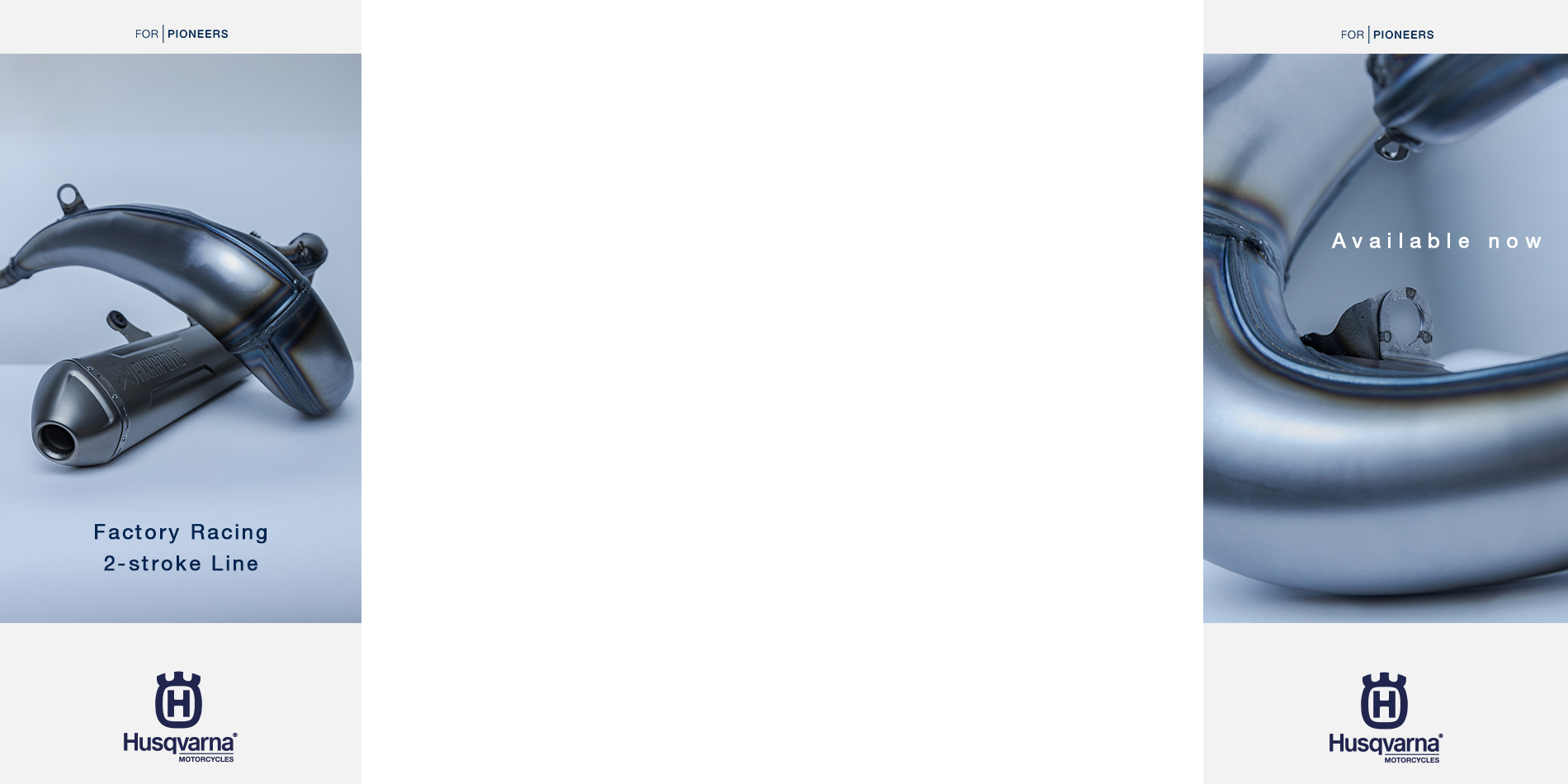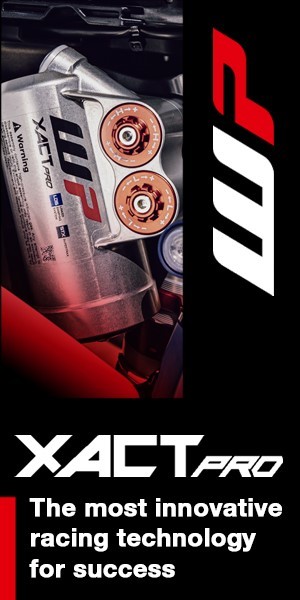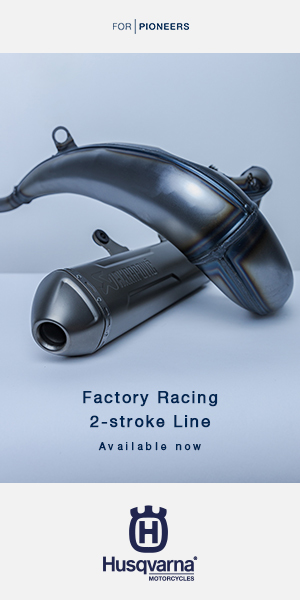Triumph - Legendary
Posted on July 20, 2021
The news of Iconic motorcycle company Triumph entering into motocross and enduro came as a bit of a surprise although the signs of their involvement has been around now for some time.
Motocross legend Ricky Carmichael suddenly started appearing on their bikes and donning their logo on his clothing. It was pretty common knowledge what was happening, and while the World waited for the official news, Triumph and RC continued giving clues to the exciting plans.
Triumph is a British company with over 100 years of history from their invovement in building bikes for World Wars, their success with legendary competitors like Mike Hailwood and Gary Nixon, to movie stars like Steve McQueen and Marlon Brando, they have always been something of a romantic in the motorcycle industry.

Like famous British brands like Vincent, BSA, Norton, Royal Enfeild, Matchless and many others, Triumph had tough times in the last 100 years, even going out of business by the 1980s. But the brand returned in the 1990s due to John Bloor a Brit who continued to bring the brand some exciting new models.
Triumph History
1883 Siegfried Bettmann moves to Coventry, England from Nuremberg, Germany.
1884 Bettmann starts an import-export company. He imports German sewing machines and also sells bicycles badged with the name “Bettmann.”
1887 Bettmann changes the name of his company to New Triumph Co. Ltd. (Later it will be changed again to Triumph Cycle Co. Ltd.) His principal investor is John Dunlop, a Scottish veterinarian who, albeit briefly, holds the patent for the pneumatic tire. Nice idea, too bad he didn’t really have it first! (Another Scot, R. W. Thompson, was the real inventor.) In any case, Dunlop is the first to successfully commercialize the invention. A German engineer, Mauritz Schulte, joins Triumph. He convinces Bettmann that Triumph should design and produce its own products.
1895 Schulte imports one of the first “practical” motorcycles, made by Hildebrand and Wolfmuller, to study the machine. Triumph considers making it under license, but under English law, powered vehicles are subject to a 4-mph speed limit. A man must walk ahead of each vehicle waving a red flag. This is bound to limit commercial appeal, and Triumph chooses not to get into the motorcycle business.
1902 With the repeal of those onerous sections of the Locomotive Act at the end of the 19th century, Schulte sets out to design his own motorcycle. First Triumph is produced – known as No. 1. This is basically one of the company’s bicycles, fitted with a 2-hp Minerva engine made in Belgium.
1903 Triumph opens a subsidiary in Germany to build and sell motorcycles there. Better engines are sourced from JAP (the initials of James A. Prestwich.)
1905 Triumph produces its first motorcycle completely in-house. It’s powered by a 3-hp engine and has a top speed of 45 mph.
1907 Annual production reaches 1,000 units. A new 450cc motor makes 3.5 hp.
1908 A new model comes with a variable pulley to help with difficult inclines. To change gears, the rider comes to a complete stop, gets off the bike and moves the belt by hand. Jack Marshall wins the single-cylinder class at the TT (on the old Peel course) averaging about 45 mph. It’s not known if he stopped to change gears or just pedaled his ass off, too.
1910 Triumph makes a big advance with the ‘free engine’ device (basically, the first practical clutch), which allows the user to start the engine with the bike on its stand and ride away from a standing start. There are two models in the lineup, and sales hit 3,000 units!
1911 Most bikes are fitted with footpegs only, not pedals.
1913 Schulte builds a prototype 600cc vertical Twin.
1914 Despite its strong connection to Germany, Triumph is chosen by Col. Claude Holbrook to supply the Type H motorcycle for military Allied military service. Triumph will sell 30,000 motorcycles to the military over the course of WWI.
1919 Schulte leaves the company, with a (very!) generous severance package. He’s replaced by none other than Col. Holbrook.
1920 Triumph produces the 550cc Type SD, the company’s first bike to feature a chain-driven rear wheel. SD stands for Spring Drive – it’s an early version of a cush drive.
1921 Bicycle-style rim brakes are replaced by drum brakes. The new bikes need better brakes, as they now make a lot more power – especially the prototype 20-hp Model R, with four-valve head. It is known as the “Riccy” after one of its designers, Frank Ricardo.
1927 Production hits 30,000 units.
1929 Wall Street stock market crashes. Triumph sells its German subsidiary.
1930 Under pressure from creditors, Bettmann is deposed as head of the company. A small two-stroke, the Model X, is the first Triumph with unit construction.
1933 Page’s first attempt at a 650cc Twin is a commercial failure; the public seems to want V-Twins.
1935 A foot-change gearshift is available as an option on 650 Twins.
1936 Triumph’s car and motorcycle businesses are split. Jack Sangster, who had owned Ariel, buys the motorcycle business and immediately hires Edward Turner (who had previously created the Ariel Square Four) as chief designer. Sangster reinstitutes Bettmann as the company chairman.
1937 Turner unveils the 498cc Speed Twin (T100) that has a top speed of over 90 mph. It is the definitive British motorcycle and establishes a pattern for Triumph bikes that will last more than 40 years.
1938 Bill Johnson buys an interest in British and American Motors, a bike shop in Pasadena. (Johnson Motors will later distribute Triumph motorcycles across the American West.)
1940 All motorcycle production is geared towards the war effort. With a new bike in the works, the Triumph factory is demolished in the blitz of Coventry.
1942 A new plant opens in Meriden, England.
1945 Over the course of the war, Triumph has sold 50,000 motorcycles to the military. With the return of peace, the company focuses on three models, the Tiger 100, the Speed Twin and the smaller touring 349cc 3T. All models feature a telescopic front fork.
1946 Ernie Lyons wins the Manx Grand Prix on a redesigned Tiger 100, using a lightweight all-alloy motor that Triumph designed for use on aircraft during the war. (The motor powered a radio generator.)
1947 A rear “sprung hub” is optional.
1950 Triumph sells more bikes in the U.S. than any other market, including Britain.
1951 Jack Sangster sells Triumph to BSA for £2.5 million.
1954 Marlon Brando rides a ’50 Thunderbird in the film “The Wild One.”
1955 Johnny Allen goes 193 mph on the Bonneville Salt Flats in a streamliner powered by a tuned 650cc T-bird motor. The TR6 “Trophy” is the first Triumph built expressly for the U.S. market. It will prove popular with desert racers.
1958 Mike Hailwood teams with Dan Shorey to win the Thruxton 500, which is one of the most important races in the UK, from a commercial perspective.
1961 Bert Hopwood moves from AMC to Triumph, where he conceives a three-cylinder motor.
1962 Triumph design staff is further strengthened with the arrival of Doug Hele, from Norton. He finalizes the design of the Triple motor (though it will not appear for several years). Hele also designs a stiffer, double-cradle frame for the Bonneville, but it was not adopted.
1963 All the 650 Twins now feature unit construction. With the encouragement of Johnson Motors, a stripped-for-racing version of the Bonneville is produced for the U.S. market only. The T120C “TT” will become one of the most sought-after Triumphs of the period.
1966 Buddy Elmore wins the Daytona 200 on a factory-prepped 500cc Tiger. The Gyronaut X-1, a streamliner powered by two Triumph 650cc motors, goes 245 mph on the Bonneville Salt Flats.
1967 Gary Nixon proves that last year’s Daytona 200 win was no fluke by repeating the feat.
1969 Malcolm Uphill wins the Production TT on a Bonneville. In the process he puts in the first-ever lap over 100 mph on a production motorcycle. Rob North, an expatriate Englishman based in San Diego, designs a stiffer frame for the Triples, just in time for Daytona.
1970 Uphill wins the proddie TT on a Triple, which is nicknamed “Slippery Sam.” Not because of its well-designed fairing, but because it leaked oil all over Uphill’s boots.
1971 A new frame appears for the Bonneville. It is a Rob North design based on the Trackmaster dirt-track frame and it carries the oil in the large-diameter top tube.
1973 Bert Hopwood designs a modular engine based on an overhead-cam, 200cc Single that can be produced as a 1,000cc across-the-frame Five. It will never see the light of day. By the end of the year, the writing is on the wall for the British motorcycle industry. Triumph merges with Norton and is put under the control of financier Dennis Poore.
1977 NVT goes bankrupt. The Meriden Co-op introduces the Bonneville Jubilee Special in honor of the Queen’s 50th birthday. It’s 750cc and has cast wheels.
1980 Although the British government is willing to write off a substantial debt, the Meriden factory is still deep in the hole. There are a few interesting bikes on the drawing boards but no capital to develop them, nor is there any reason to think the work force could or would produce machines capable of rivaling the ascendant Japanese manufacturers, which are going from strength to strength.
1983 After some lean years, the Meriden factory closed its doors. English property developer John Bloor bought the remains later that year, saving the Triumph name. Bloor licensed the Triumph name to a small shop that continued to assemble a couple of Bonnevilles a day until 1985.
1985 Bloor, an unlikely savior, builds a subdivision on the site of the old Meridan factory, but he also acquires a new site, in nearby Hinckley. There, he outfits a new factory with new prototyping tools.
1989 Bloor stakes at least $60 million of his own money on new mass-production tooling for the Hinckley plant.
1990 Triumph unveils six new models at the Cologne Show in September: The unfaired Trident 750 and 900 Triples, the touring Trophy 900 Triple and 1200 Four and the sports-oriented Daytona 750 Triple and 1000 Four. The machines are, by and large, better than most industry pundits expected. That said, they’re a step or two behind the best that Japan has to offer.
1995 Exports of new Triumphs to America begins.
1999 Triumph serves notice that it will enter the ultra-competitive 600cc supersport market by creating the TT600. It will be good, but not quite good enough.
2002 A massive fire guts the main Hinckley assembly plant. The smoke clouds definitely have a silver lining, however. The company’s insurance claim funds a “do over.” The design and R&D shops are undamaged and continue new-bike development while the factory is rebuilt and refitted with state-of-the-art tooling. Triumph releases the four-cylinder Daytona 600 supersports bike.
2005 Triumph bores out the Daytona 600 to 650cc. The change bars the bike from competition in the 600 Supersport class, but it was not having success there, anyway, despite a popular win at the Isle of Man in 2003.) The change makes the bike a great “real world middleweight,” especially for taller riders.
2007 A “mini Speed Triple” is introduced in the Street Triple. Powered by the same 675cc three-cylinder in the Daytona 675, the Street Triple provides Speed Triple-type entertainment in a smaller package. Though the similarity in names leads to much confusion.
2010 In a bid to challenge the market normally dominated by a certain brand from Milwaukee, the Thunderbird cruiser is launched. Powered by a 1600cc parallel-Twin, it’s the largest production engine in this layout. The Tiger 800, featuring a bored-out Daytona 675 engine, harkens back to the Tiger’s roots as a dual-purpose motorcycle.
2021 Announce it's involvement with motocross and Enduro, and a new era in this famous companies future.












